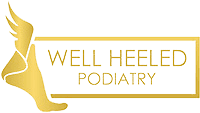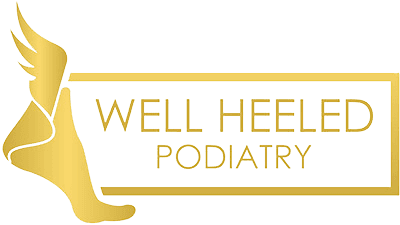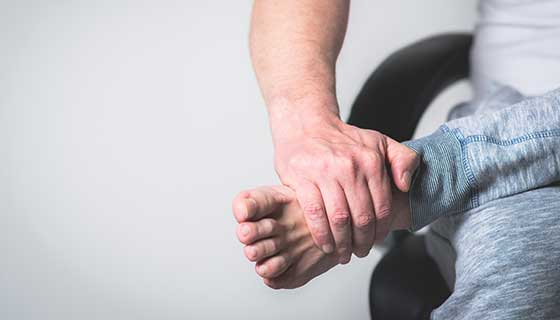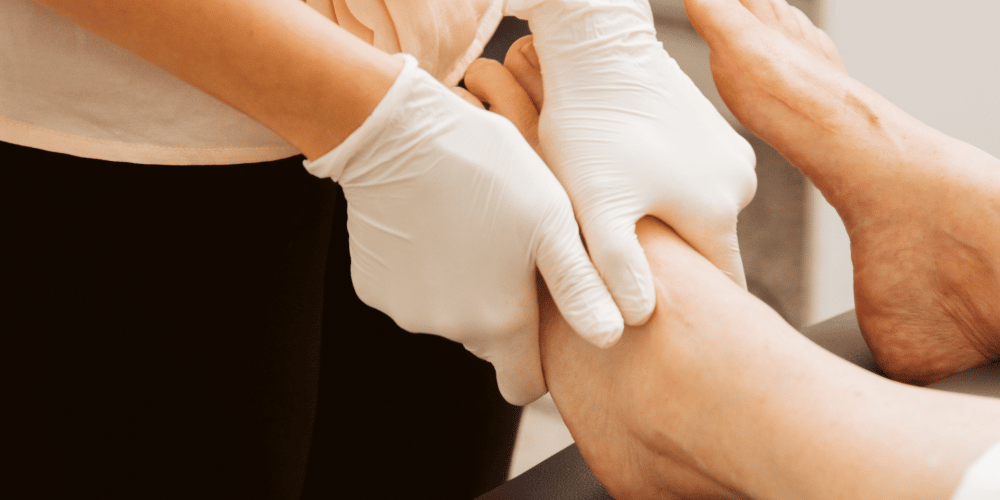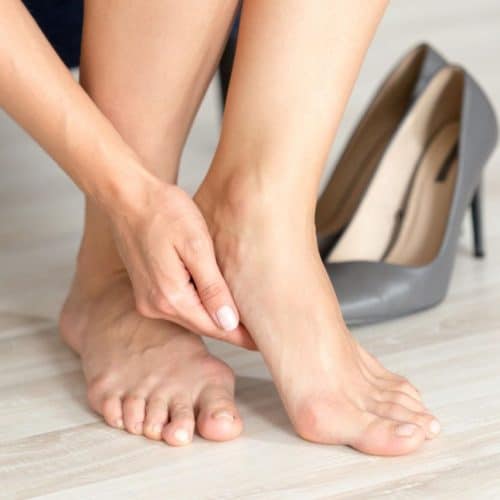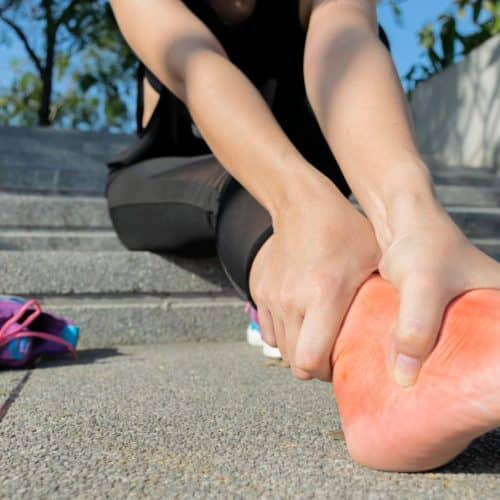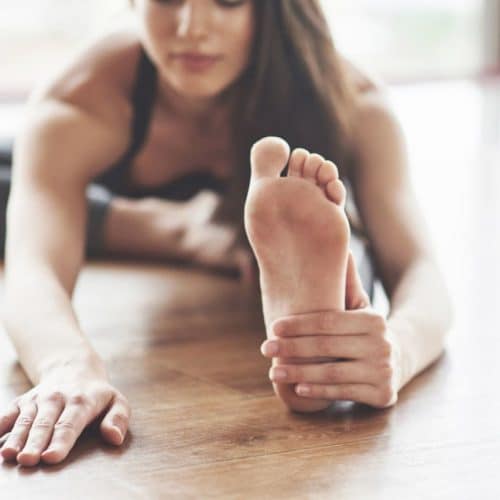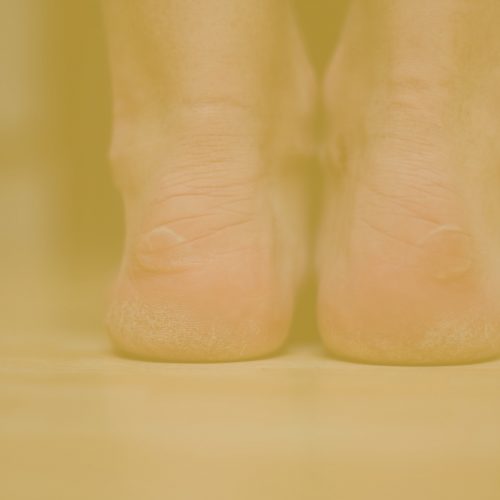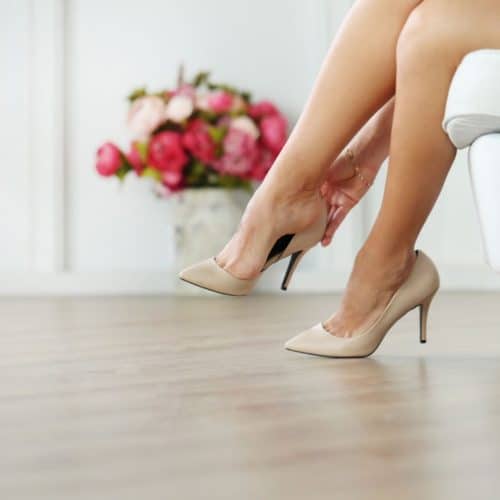Are you tired of dealing with foot pain every day? Do you find yourself wincing with each step, unable to enjoy your favourite activities? Well, fret no more! In this ultimate guide to healthy feet,
The Anatomy of Feet
Understanding the intricate anatomy of our feet is essential in comprehending the causes of foot pain and how to prevent it. Feet are remarkable structures composed of 26 bones, 33 joints, and an intricate web of muscles, tendons, and ligaments. Let’s explore the key components that make up the human foot:
1. Bones
The 26 bones in each foot can be categorised into three main groups: tarsal, metatarsal, and phalanges. The tarsal bones form the back of the foot, including the talus, calcaneus (heel bone), navicular, cuboid, and three cuneiform bones. These bones provide stability and support to the foot’s arch. The metatarsal bones are the long bones that extend from the midfoot to the toes, while the phalanges are the smaller bones of the toes.
2. Joints
With 33 joints, the foot is highly flexible and capable of various movements. The joints allow the foot to adapt to uneven surfaces and provide shock absorption during activities like walking and running. The foot joints include the ankle joint, subtalar joint (between the talus and calcaneus), and numerous smaller joints within the midfoot and forefoot.
3. Muscles and Tendons
The foot has an intricate system of muscles and tendons that allow it to move, flex, and support the arch. These muscles can be divided into intrinsic and extrinsic muscles. The intrinsic muscles are located within the foot and control fine movements, while the extrinsic muscles, originating from the leg, provide power for more substantial movements.
4. Ligaments
Ligaments are tough bands of connective tissue that hold the bones and joints together, providing stability to the foot. They are crucial in preventing excessive movements that could lead to injuries. Ligaments also help maintain the arches of the foot, distributing weight evenly and allowing for shock absorption.
5. Arches
The foot is known for its three arches: the medial longitudinal arch, the lateral longitudinal arch, and the transverse arch. These arches are formed by the alignment of bones and are supported by the muscles and ligaments. The arches act as natural shock absorbers, helping the foot adapt to various surfaces and reducing the impact on the rest of the body.
Understanding the complexity and significance of foot anatomy can help nerds and everyone else appreciate the importance of foot care. By maintaining strong and healthy feet, we can indulge in our favourite activities with minimal discomfort and ensure long-term foot health.
Common Causes of Foot Pain
Foot pain can affect anyone, including nerds, who often find themselves engrossed in their hobbies for extended periods. Identifying the common causes of foot pain can help take proactive steps to prevent discomfort. Here are some factors that contribute to foot pain:
1. Prolonged Sitting or Standing
People, especially those engaged in gaming, reading, or coding, often spend long hours in a static position, either sitting at a desk or standing in queues during events. Prolonged sitting can lead to poor circulation and muscle stiffness while standing for extended periods can cause muscle fatigue and strain in the feet.
2. Ill-Fitting Footwear
Wearing improper footwear is a prevalent cause of foot pain. Like anyone else, Nerds may prioritise style over comfort when choosing shoes. Shoes that are too tight, lack adequate support, or have insufficient cushioning can lead to discomfort and foot problems.
3. Lack of Physical Activity
Nerds who immerse themselves in their hobbies may neglect physical activity. The lack of movement and exercise weakens the muscles in the feet, making them more vulnerable to pain and injuries.
4. High-Impact Activities
Participating in high-impact activities without proper support or conditioning can strain the feet. Jumping, running, or engaging in intense physical activities without gradually building up foot strength can lead to pain and potential injuries.
5. Overuse and Repetitive Strain
People passionate about their hobbies might overdo certain activities, leading to overuse injuries. Repetitive strain on the feet, such as constant tapping on pedals or pressing buttons, can result in conditions like plantar fasciitis or tendonitis.
6. Foot Abnormalities
Certain foot abnormalities, such as flat feet (low or no arches) or high arches, can cause imbalances in weight distribution, leading to pain and discomfort. Additionally, bunions or hammertoes can cause pain and affect foot mechanics.
7. Inadequate Foot Care
Neglecting foot care can exacerbate pain and discomfort. Failing to keep the feet clean, moisturised, and adequately supported can lead to various foot issues.
8. Medical Conditions
Underlying medical conditions such as arthritis, diabetes, or circulatory problems can manifest as foot pain. These conditions require medical attention and may contribute to foot discomfort.
Choosing the Right Footwear
The right footwear is crucial for maintaining healthy feet and preventing foot pain. Whether you’re a dedicated nerd engrossed in your hobbies or someone with an active lifestyle, wearing the appropriate shoes can make a significant difference. Here are some essential factors to consider when choosing the right footwear:
1. Arch Support
One of the most critical aspects of footwear is arch support. The arches of the foot act as natural shock absorbers and help distribute body weight evenly. Different individuals have varying arch shapes, such as high arches, normal arches, or flat feet. Choose shoes that provide adequate support for your specific arch type. Shoes with built-in arch support can help reduce strain on the foot and alleviate discomfort.
2. Toe Space
Having enough room for your toes to move freely prevents foot pain. Too narrow or tightly fitted shoes can compress the toes, leading to issues like bunions or corns. Ensure sufficient toe space in the footwear allows your toes to wiggle comfortably without feeling cramped.
3. Cushioning
Good cushioning is vital for absorbing shock during walking or running. Shoes with ample cushioning in the sole help reduce the impact on your feet and joints, preventing pain and discomfort. Look for shoes with cushioned midsoles or additional padding in the heel and forefoot areas.
4. Proper Fit
Ill-fitting shoes can be a primary cause of foot pain. Always try on footwear before purchasing and walk around to assess the fit. Ensure there is no slipping at the heel and the shoe feels snug but not tight. Avoid shoes that are too loose, leading to instability and potential injuries.
5. Breathable Materials
Opt for shoes made from breathable materials like mesh or leather to promote air circulation around your feet. Proper ventilation prevents excess moisture and helps prevent fungal infections, such as athlete’s foot.
6. Sole Thickness and Flexibility
Consider the thickness and flexibility of the shoe’s sole. A thicker, more rigid sole provides better support for activities that involve impact, such as running or hiking. However, a more flexible sole allows for natural foot movement for everyday wear and casual activities.
7. Activity-Specific Shoes
Different activities may require specialised footwear. For example, invest in running shoes or athletic shoes designed for specific sports if you are into running or sports. These shoes offer features tailored to the demands of the activity, reducing the risk of foot-related injuries.
8. Replace Worn-Out Shoes
Finally, don’t forget to replace worn-out shoes. Over time, the cushioning and support in shoes break down, diminishing their effectiveness in preventing foot pain. Regularly inspect and replace your shoes when you notice signs of wear and tear.
By prioritising comfort, support, and proper fit, nerds and individuals can make informed decisions when choosing the right footwear. Investing in high-quality shoes that cater to your foot’s unique needs will go a long way in maintaining healthy and pain-free feet.
Regular Foot Exercises
Regular foot exercises are essential for nerds and individuals alike, especially those who spend long hours sitting or standing during their hobbies or work. These exercises help strengthen the foot muscles, improve flexibility, and prevent foot pain. Here are some simple yet effective foot exercises to incorporate into your daily routine:
1. Toe Flexes
Toe flexes are an excellent approach to improving the flexibility of the foot and releasing tension in the toes and the arches of the foot. Place your feet firmly on the floor while you relax in a chair of your choosing.
Raise your toes off the ground while ensuring that your heels remain in the same position. After a little pause, slowly bring your toes back to their starting position. Perform this action approximately ten to fifteen more times.
2. Ankle Circles
Ankle circles help improve ankle mobility and reduce stiffness. Sit or stand with your feet flat on the floor. Lift one foot slightly off the ground and rotate your ankle in a circular motion. Perform 10 circles in one direction and then switch to the other direction. Repeat the same for the other foot.
3. Toe Stretching
Toe stretching exercises can counteract the effects of wearing shoes for extended periods, especially shoes with a narrow toe box. Sit down and place your foot on the opposite knee. Gently grasp your toes and pull them upward, stretching the muscles at your foot’s bottom. Hold the stretch for 15-30 seconds and release. Repeat this stretch for each foot a few times.
4. Marble Pick-Up
The workout that involves picking up marbles works the muscles in the arch and the toes. Put a bowl with a few marbles on the floor, and then choose a comfortable place to sit in front of it. Put one marble at a time, which you will be picking up with your toes, into the bowl that is sitting next to you. Continue working through this practice until all of the marbles have been moved.
5. Toe-Tapping
Tapping one’s toes is a straightforward workout that may be performed either seated or standing. Tap your toes quickly on the floor for roughly thirty seconds, and then give yourself a few seconds of respite in between sets. Repeat this technique three to four times to enhance the amount of blood that flows through the foot.
6. Heel Raises
Heel raises help to strengthen the calf muscles and provide better foot support. Stand with your feet shoulder-width apart and slowly raise your heels, lifting onto your toes. Hold for a moment, and then lower your heels back down. Perform 15-20 repetitions.
7. Resistance Band Exercise
Sit on the floor with your legs extended straight in front of you. Place a resistance band around the balls of your feet and hold the ends of the band with your hands. Flex your feet and pull the band towards your body, resisting the tension. Slowly return to the starting position. Repeat this exercise for 10-15 repetitions.
Incorporate these regular foot exercises into your daily routine to keep your foot muscles strong and flexible. Taking a few minutes each day to care for your feet can go a long way in preventing foot pain and promoting overall foot health.
Foot Massage and Soaks
Foot massage and foot soaks are wonderful methods to treat your feet while relieving stress and promoting relaxation throughout the body. Nerds and other people who spend significant time in their chosen pastimes may find incorporating these practices into their daily routine very useful.
The following are some ways for a revitalising foot massage and foot bath that can relax your tired feet:
1. Foot Roller Massage
A foot roller massage is a simple yet effective way to ease foot discomfort and release muscle tension. Sit comfortably in a chair and place a foot roller or a tennis ball on the floor. Roll your foot over the ball or roller, applying gentle pressure. Pay attention to the arch, heel, and ball of your foot. Spend a few minutes on each foot, allowing the pressure to alleviate any tightness.
2. Self-Massage with Essential Oils
Treat your feet to a self-massage using essential oils for relaxation and rejuvenation. Choose a soothing essential oil, such as lavender or peppermint, and mix a few drops with a carrier oil like coconut or almond oil. Sit comfortably, and using your thumbs, massage the oil into your feet with gentle circular motions. Focus on the areas that feel tense or sore. Combining massage and aromatherapy will provide a calming experience for your feet and mind.
3. Epsom Salt Soak
Epsom salt soaks are an excellent way to relieve foot pain and reduce inflammation. Fill a basin or a foot spa with warm water and add a generous amount of Epsom salt. Stir the water to dissolve the salt. Sit comfortably and soak your feet for 15-20 minutes. The magnesium in Epsom salt aids in relaxing muscles and soothing soreness. This therapeutic soak can leave your feet feeling revitalised and refreshed.
4. DIY Foot Soak with Herbal Teas
Create a soothing foot soak using herbal teas known for their calming properties. Brew a strong infusion of chamomile, green tea, or peppermint tea and let it cool. Fill a basin with warm water and pour in the herbal tea infusion. Add a handful of Epsom salt for added benefits. Soak your feet in this fragrant blend, allowing the warmth and herbal goodness to work magic on your tired feet.
5. Ice Water Soak
An ice water soak can be invigorating and help reduce swelling and inflammation in the feet. Fill one basin with cold water and another with ice cubes. Start by soaking your feet in the cold water for 5 minutes, then transfer them to the ice water for 30 seconds. Repeat this process a few times, ending with the cold water soak. This contrast therapy can promote better blood circulation and provide a refreshing sensation to your feet.
6. Aromatic Foot Scrub
A foot scrub can exfoliate and soften your skin while providing relaxation. Create an aromatic foot scrub using ingredients like sugar, coconut oil, and your favourite essential oil. Gently massage the scrub onto your feet, paying attention to rough areas like the heels. Rinse off with warm water and pat your feet dry. The scrub will leave your feet feeling smooth and add a delightful fragrance.
Incorporating foot massage and soaks into your self-care routine can be a therapeutic and enjoyable experience. These practices not only relieve foot pain but also provide a moment of tranquillity amid your busy nerd lifestyle. Treat your feet with love and care; they will support you through your adventures!
Taking Breaks and Stretching
It is necessary for those who spend lengthy hours on their jobs or hobbies to take frequent breaks and incorporate stretching routines into their daily routines. This will help them keep healthy feet and avoid experiencing any discomfort. To maintain your feet in great shape while you are working, here are some helpful hints for taking breaks and performing efficient stretching exercises:
1. Set Timers for Breaks
When engrossed in your favourite activity, time can fly by unnoticed. Set timers or alarms on your phone or computer to remind yourself to take breaks. Aim to take short breaks every hour to give your feet a chance to rest and recover from prolonged sitting or standing.
2. Walk and Move Around
During your breaks, take the opportunity to walk and move around. Walking stimulates blood circulation and helps prevent stiffness in the feet. Stroll around your room, office, or outdoor space, allowing your feet to stretch and muscles to relax.
3. Ankle and Calf Stretches
Simple ankle and calf stretches can be performed during breaks to promote foot flexibility and relieve tension.
- Ankle Stretch: Sit with one leg extended in front of you. Flex your foot upward and hold the stretch for 15-20 seconds. Then point your toes downward and hold again. Repeat this stretch three to four times on each foot.
- Calf Stretch: Stand facing a wall and place your hands on it for support. Step one foot back, keeping it straight with the heel on the ground. Bend your front knee while pushing your hips forward to feel a stretch in the calf of the back leg. Hold for 15-20 seconds and switch to the other leg. Repeat two to three times on each side.
4. Toe Raises and Toe Curls
Toe raises, and toe curls are simple exercises that can be done anywhere and help improve foot strength and flexibility.
- Toe Raises: You should either sit or stand with your feet flat on the ground. Raise your toes off the ground while ensuring that your heels remain in the same position. After a little pause, slowly bring your toes back to their starting position. 15 to 20 times is recommended.
- Toe Curls: Take a comfortable seat and place both of your feet on the floor. Curl your toes inward towards one another to increase your grip on the ground. After a brief period of holding, you should then let go. 15 to 20 times is recommended.
5. Foot Circles
Foot circles help promote foot mobility and reduce stiffness.
Sit comfortably with your feet flat on the floor. Lift one foot slightly off the ground and rotate it in a circular motion. Perform 10 circles in one direction and then switch to the other direction. Repeat the same for the other foot.
6. Mini Foot Massages
Treat your feet to mini massages during breaks to ease tension and enhance relaxation. Gently rub your feet with your hands, using circular motions and applying light pressure. Focus on the arch, heel, and ball of the foot. This quick massage can increase blood flow and provide instant relief.
7. Standing Heel Raises
If you stand for long periods, incorporate standing heel raises into your breaks to strengthen the calf muscles.
Maintain a shoulder-width distance between your feet when you stand. Get up on your tips and raise your heels as you do so. After a little pause, bring your heels back down to the starting position. 15 to 20 times is recommended.
You may avoid experiencing foot discomfort, enhance your flexibility, and maintain your foot health if you take frequent pauses and execute these stretching exercises. While following your hobbies, don’t forget to pay attention to your body and give your feet the attention and care they need.
Conclusion
Congratulations! You’ve now gained valuable insights into how to keep your feet healthy and happy, even if you’re a self-proclaimed nerd who spends hours at a desk or gaming. By implementing the tips and exercises mentioned in this guide, you can bid farewell to foot pain and embrace a more active and comfortable lifestyle.
Remember, taking care of your feet is not just a one-time thing; it’s an ongoing process. Regularly incorporating foot stretches, wearing proper footwear, and being mindful of your foot posture will go a long way in preventing future foot issues.
What’s your favourite foot-friendly activity that keeps you moving and helps you take a break from your nerd pursuits?
We’d love to hear from you! Share your thoughts in the comments below. Whether it’s a fun sport, a relaxing walk in nature, or a unique foot exercise, let’s inspire each other to maintain healthy feet while indulging in our passions.
So, let’s step forward into a future with pain-free feet and a wealth of nerdy adventures! Stay tuned for more exciting content, tips, and tricks to enhance your well-being. Together, we’ll conquer foot pain and journey to optimal foot health!
Content Summary
- From selecting the right footwear for your nerdy adventures to simple exercises that will strengthen your feet, we’ll reveal the secrets to keeping your feet happy and pain-free.
- Understanding the intricate anatomy of our feet is essential in comprehending the causes of foot pain and how to prevent it.
- Understanding the complexity and significance of foot anatomy can help nerds and everyone else appreciate the importance of foot care.
- Foot pain can affect anyone, including nerds, who often find themselves engrossed in their hobbies for extended periods.
- Identifying the common causes of foot pain can help take proactive steps to prevent discomfort.
- Wearing improper footwear is a prevalent cause of foot pain.
- The right footwear is crucial for maintaining healthy feet and preventing foot pain.
- Whether you’re a dedicated nerd engrossed in your hobbies or someone with an active lifestyle, wearing the appropriate shoes can make a significant difference.
- Having enough room for your toes to move freely prevents foot pain.
- Ensure sufficient toe space in the footwear allows your toes to wiggle comfortably without feeling cramped.
- Shoes with ample cushioning in the sole help reduce the impact on your feet and joints, preventing pain and discomfort.
- Look for shoes with cushioned midsoles or additional padding in the heel and forefoot areas.
- Consider the thickness and flexibility of the shoe’s sole.
- Finally, don’t forget to replace worn-out shoes.
- The workout that involves picking up marbles works the muscles in the arch and the toes.
- Tapping one’s toes is a straightforward workout that may be performed either seated or standing.
- Incorporate these regular foot exercises into your daily routine to keep your foot muscles strong and flexible.
- Foot massage and foot soaks are both wonderful methods to treat your feet while also relieving stress and promoting relaxation throughout the body.
- A foot roller massage is a simple yet effective way to ease foot discomfort and release muscle tension.
- Treat your feet to a self-massage using essential oils for relaxation and rejuvenation.
- Create a soothing foot soak using herbal teas known for their calming properties.
- Fill a basin with warm water and pour in the herbal tea infusion.
- An ice water soak can be invigorating and help reduce swelling and inflammation in the feet.
- Repeat this process a few times, ending with the cold water soak.
- A foot scrub can exfoliate and soften your skin while providing relaxation.
- Incorporating foot massage and soaks into your self-care routine can be a therapeutic and enjoyable experience.
- During your breaks, take the opportunity to walk and move around.
- Simple ankle and calf stretches can be performed during breaks to promote foot flexibility and relieve tension.
- Toe raises and toe curls are simple exercises that can be done anywhere and help improve foot strength and flexibility.
- Foot circles help promote foot mobility and reduce stiffness.
- If you stand for long periods, incorporate standing heel raises into your breaks to strengthen the calf muscles.
- Get up on your tips and raise your heels as you do so.
- While following your hobbies, remember to pay attention to your body and give your feet the attention and care they need.
- You’ve now gained valuable insights into how to keep your feet healthy and happy, even if you’re a self-proclaimed nerd who spends hours at a desk or gaming.
- By implementing the tips and exercises mentioned in this guide, you can bid farewell to foot pain and embrace a more active and comfortable lifestyle.
- Remember, taking care of your feet is not just a one-time thing; it’s an ongoing process.
- Regularly incorporating foot stretches, wearing proper footwear, and being mindful of your foot posture will go a long way in preventing future foot issues.
- Whether it’s a fun sport, a relaxing walk in nature, or a unique foot exercise, let’s inspire each other to maintain healthy feet while indulging in our passions.
FAQs
1. How do I know if my shoes have proper arch support?
You can visit a podiatrist or a specialised shoe store to assess your feet for the right arch support.
2. Can foot pain be a sign of a more severe condition?
Yes, persistent foot pain could indicate an underlying issue. It’s best to consult a podiatrist for a proper diagnosis.
3. Are flip-flops suitable for daily wear?
Flip-flops lack arch support and cushioning, so they aren’t ideal for extended use. Stick to more supportive footwear for daily wear.
4. How often should I perform foot exercises?
Aim for at least three to four times weekly to keep your foot muscles strong and flexible.
5. Can foot massages improve overall well-being?
Yes, foot massages can enhance relaxation, reduce stress, and improve blood circulation, benefiting overall well-being.
